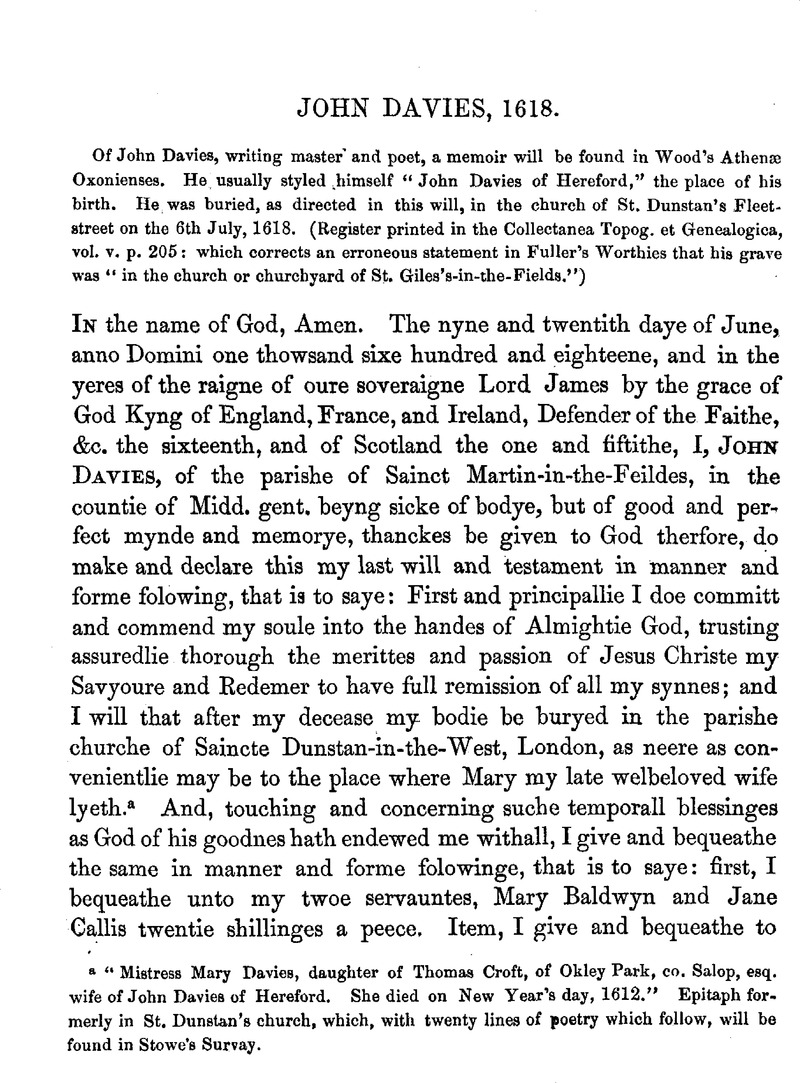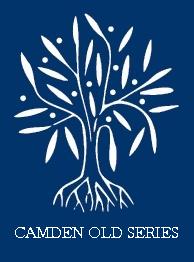No CrossRef data available.
Article contents
John Davies, 1618
Published online by Cambridge University Press: 23 February 2010
Abstract

- Type
- Wills from Doctors' Commons
- Information
- Copyright
- Copyright © Royal Historical Society 1863
References
page 87 note a “Mistress Mary Davies, daughter of Thomas Croft, of Okley Park, co. Salop, esq. wife of John Davies of Hereford. She died on New Year's day, 1612.” Epitaph formerly in St. Dunstan's church, which, with twenty lines of poetry which follow, will be found in Stowe's Survay.
page 88 note a No doubt the original of the print which forma the frontispiece to one of his copybooks, and of which there is a copy by W. Richardson. See Granger's Biographical History of England, where the author has taken the opportunity to introduce some curious particulars of the art of writing as practised in the sixteenth and seventeenth centuries. On the same subject see also a very amusing paper entitled “The History of Writing Masters” in D'Israeli's Curiosities of Literature. The painter of Davies's portrait is not mentioned.
page 88 note b Davies had formerly lived in Fleet Street. “I could not write the Court and Chaneerie hands. So my father left me for halfe a year (this was about 1611) with Mr. John Davies, in Fleet Street, (the most famous writer of his time,) to learne those hands. Who, being also a papist, with his wife and familie, their example and often discourse gave growth,” &c.—Life of Arthur Wilson, in Peek's Desid. Curiosa, p. 461.


